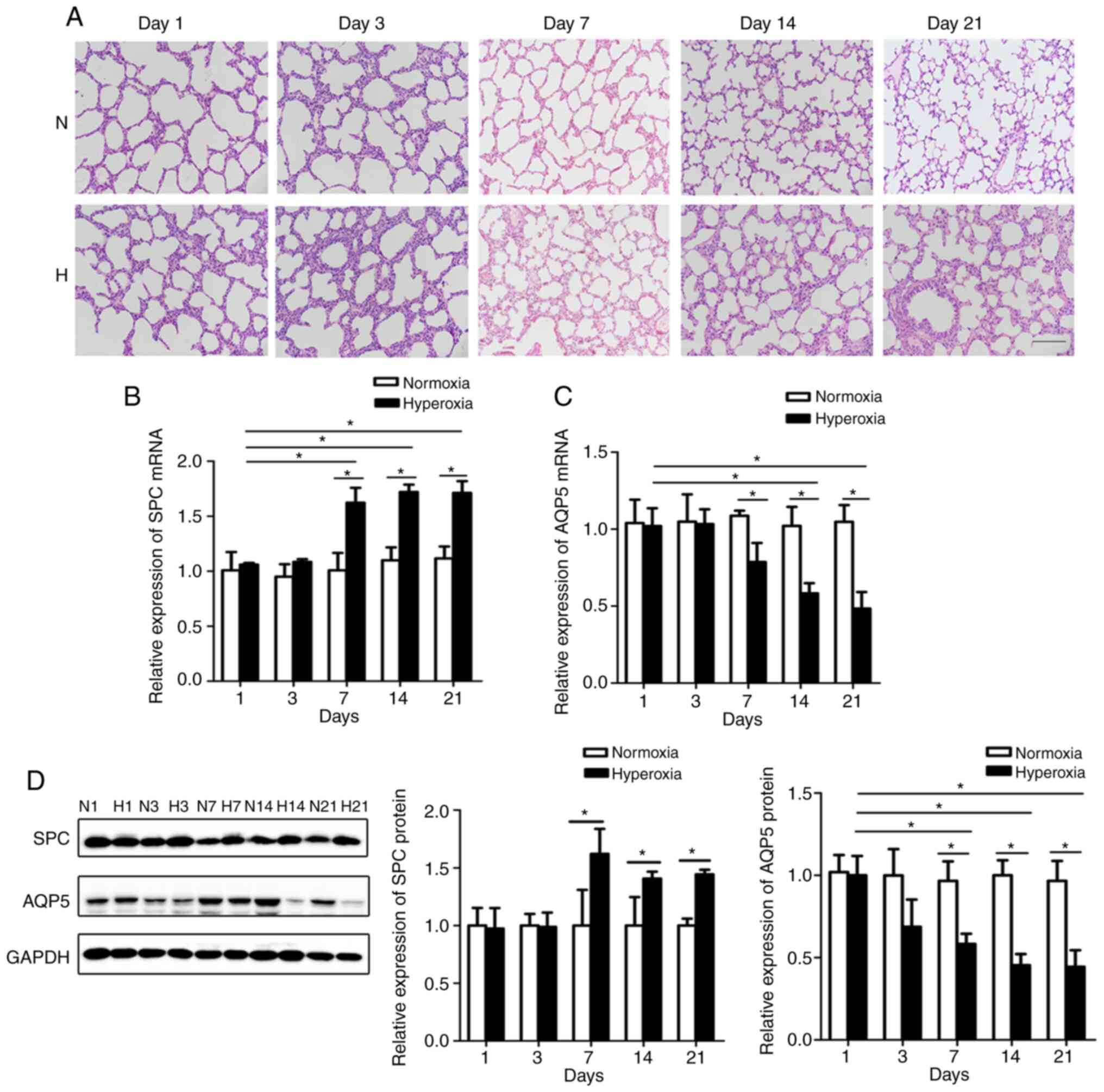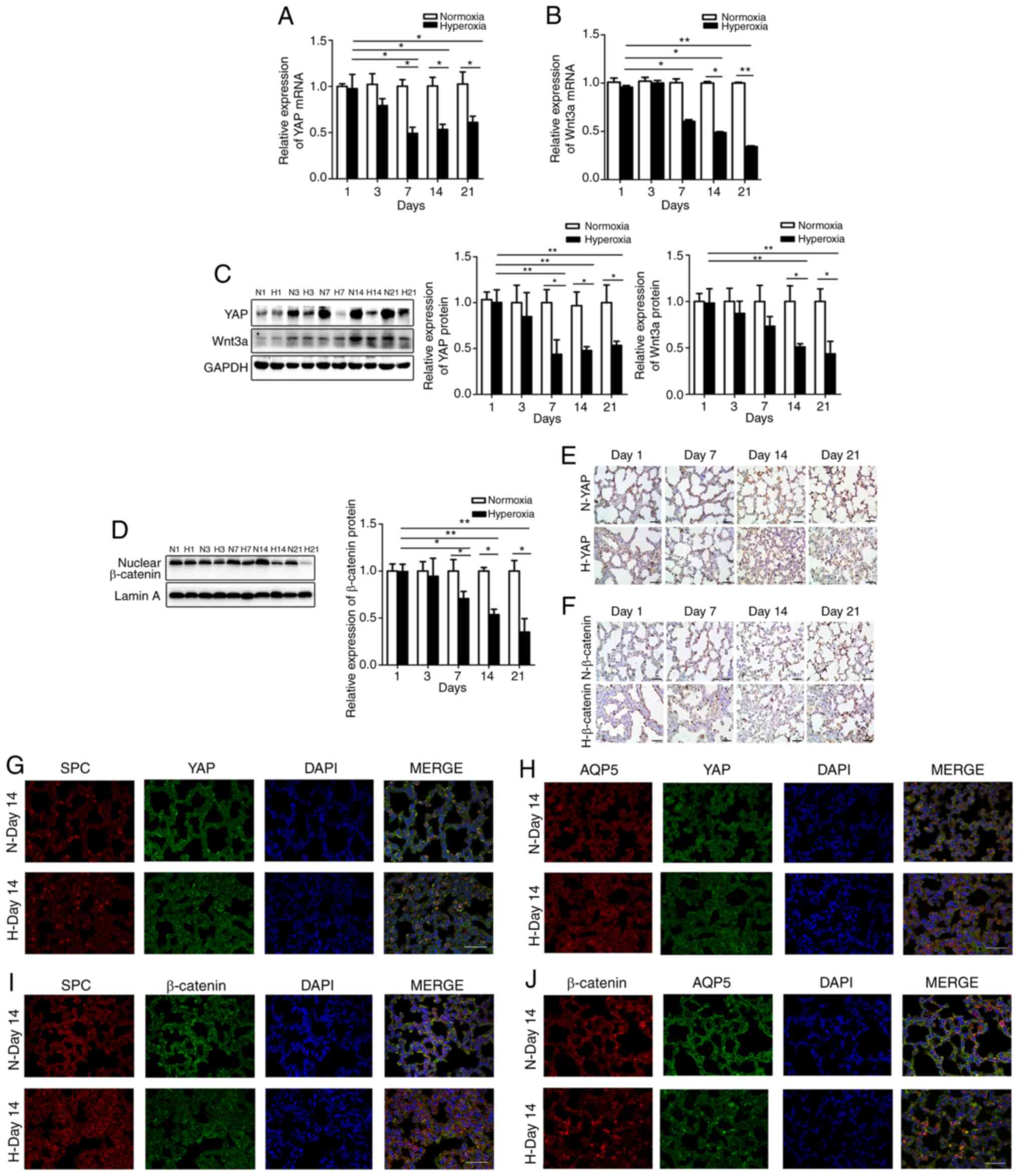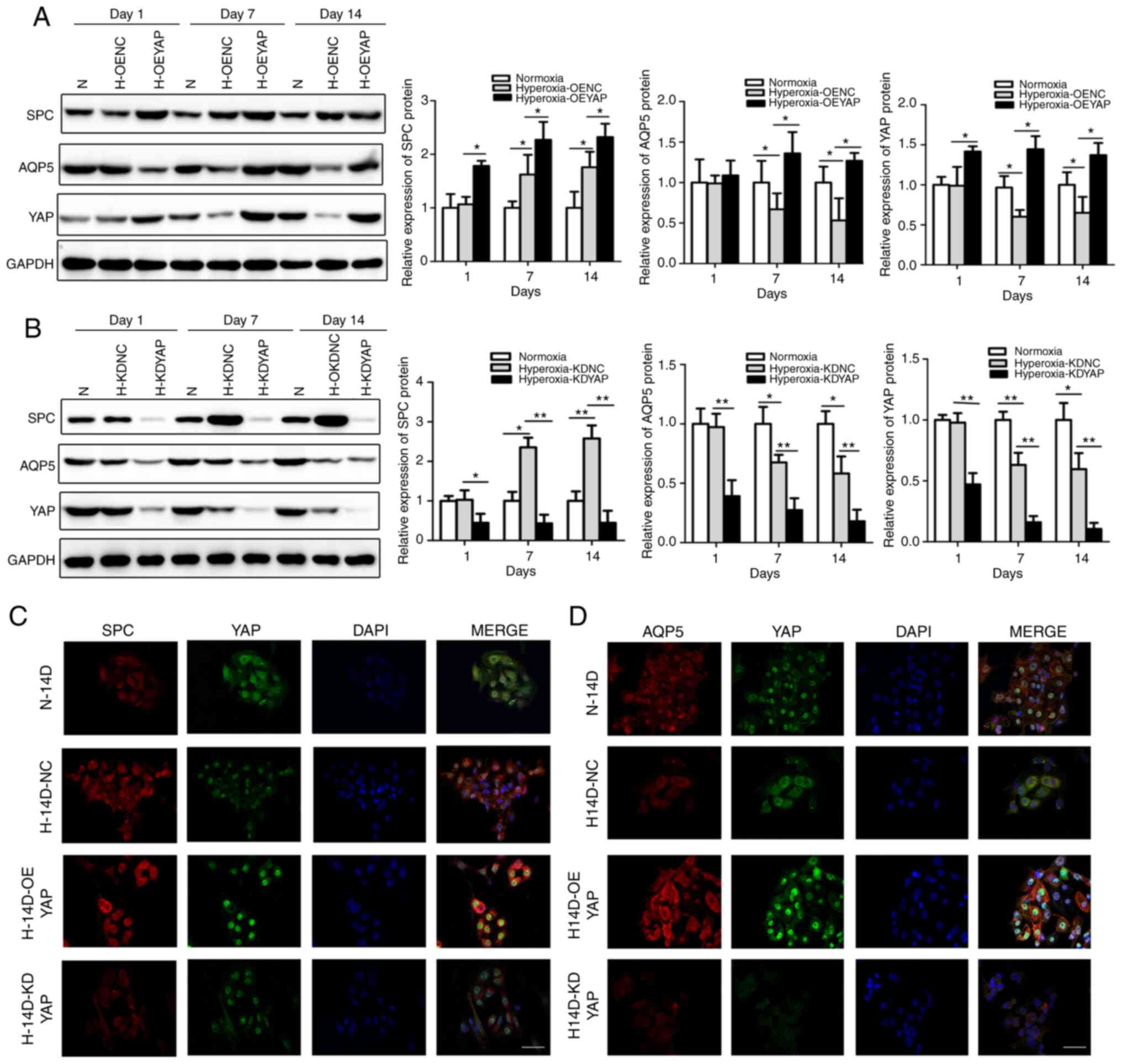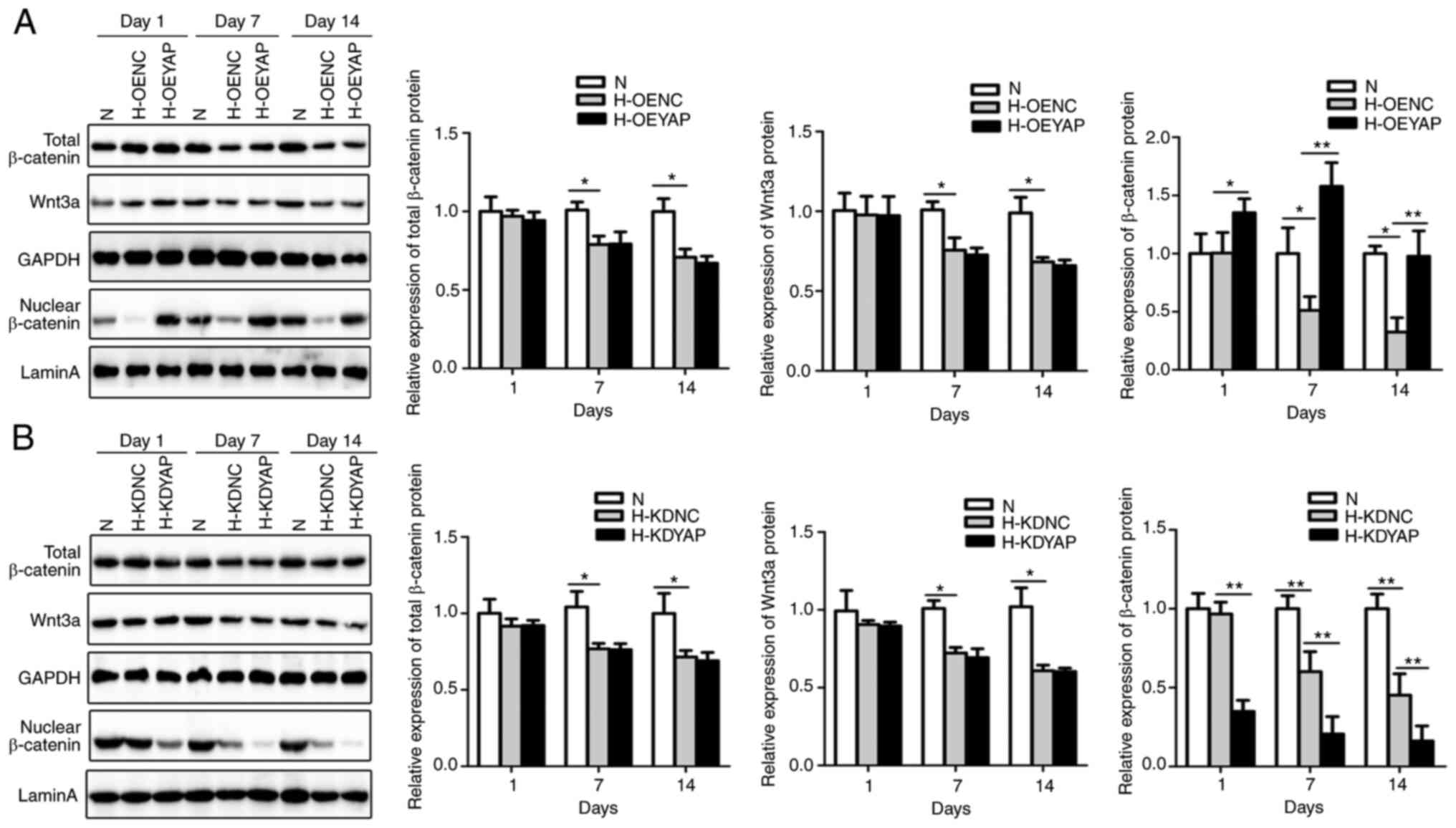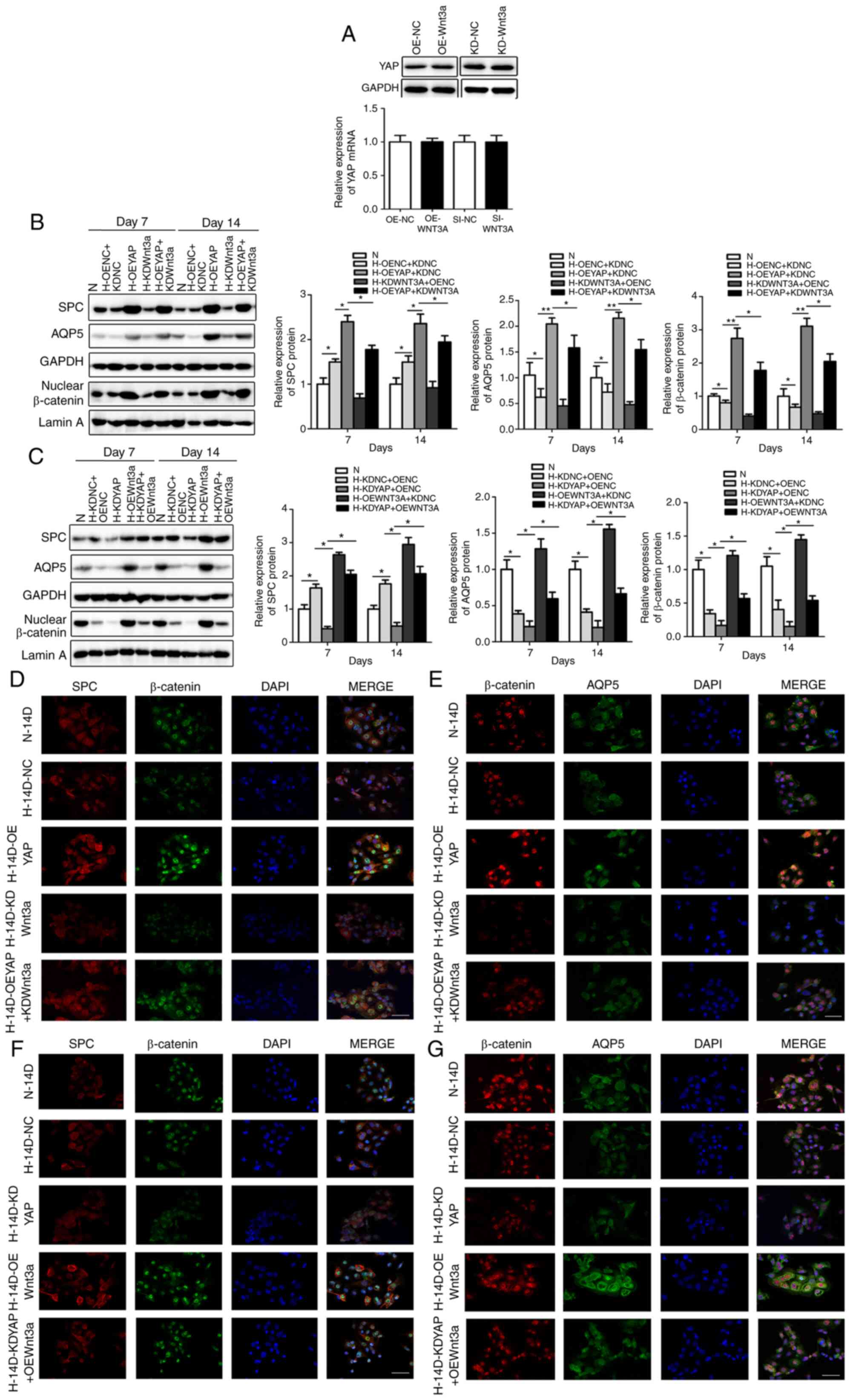|
1
|
Li W, Chen Y, Zhang J, Hong L, Yuan N,
Wang X and Lv H: IKBKE upregulation is positively associated with
squamous cell carcinoma of the lung in vivo and malignant
transformation of human bronchial epithelial cells in vitro. Med
Sci Monit. 21:1577–1586. 2015. View Article : Google Scholar : PubMed/NCBI
|
|
2
|
O'Reilly M and Thébaud B: Animal models of
bronchopulmonary dysplasia. The term rat models Am J Physiol Lung
Cell Mol Physiol. 307:L948–L958. 2014. View Article : Google Scholar
|
|
3
|
Islam JY, Keller RL, Aschner JL, Hartert
TV and Moore PE: Understanding the short- and long-term respiratory
outcomes of prematurity and bronchopulmonary dysplasia. Am J Respir
Crit Care Med. 192:134–156. 2015. View Article : Google Scholar : PubMed/NCBI
|
|
4
|
Lodha A, Seshia M, McMillan DD, Barrington
K and Yang J: Association of early caffeine administration and
neonatal outcomes in very preterm neonates. JAMA Pediatr.
169:33–38. 2015. View Article : Google Scholar
|
|
5
|
Williams MC: Alveolar type I cells:
Molecular phenotype and development. Annu Rev Physiol. 65:669–695.
2003. View Article : Google Scholar
|
|
6
|
Miyake Y, Kaise H, Isono KI, Koseki H,
Kohno K and Tanaka M: Protective role of macrophages in
noninflammatory lung injury caused by selective ablation of
alveolar epithelial type II Cells. J Immunol. 178:5001–5009. 2007.
View Article : Google Scholar : PubMed/NCBI
|
|
7
|
Mason RJ: Biology of alveolar type II
cells. Respirology. 11:S12–S15. 2006. View Article : Google Scholar : PubMed/NCBI
|
|
8
|
Shafa M, Ionescu LI, Vadivel A, Collins
JJ, Xu L, Zhong S, Kang M, de Caen G, Daneshmand M, Shi J, et al:
Human induced pluripotent stem cell-derived lung progenitor and
alveolar epithelial cells attenuate hyperoxia-induced lung injury.
Cytotherapy. 20:108–125. 2018. View Article : Google Scholar
|
|
9
|
Vega MA, Chupin C, Pascariu M, Privé A,
Dagenais A, Berthiaume Y and Brochiero E: Dexamethasone fails to
improve bleomycin-induced acute lung injury in mice. Physiol Rep.
7:e142532019.
|
|
10
|
Quantius J, Schmoldt C, Vazquez-Armendariz
AI, Becker C, El Agha E, Wilhelm J, Morty RE, Vadász I, Mayer K,
Gattenloehner S, et al: Influenza virus infects epithelial
stem/progenitor cells of the distal lung: Impact on Fgfr2b-driven
epithelial repair. PLoS Pathog. 12:e10055442016. View Article : Google Scholar : PubMed/NCBI
|
|
11
|
Yagi R, Chen LF, Shigesada K, Murakami Y
and Ito Y: A WW domain-containing yes-associated protein (YAP) is a
novel transcriptional co-activator. EMBO J. 18:2551–2562. 1999.
View Article : Google Scholar : PubMed/NCBI
|
|
12
|
Meng Z, Moroishi T and Guan KL: Mechanisms
of hippo pathway regulation. Genes Dev. 30:1–17. 2016. View Article : Google Scholar : PubMed/NCBI
|
|
13
|
Pan H, Xie Y, Zhang Z, Li K, Hu D, Zheng
X, Fan Q and Tang T: YAP-Mediated mechanotransduction regulates
osteogenic and adipogenic differentiation of BMSCs on hierarchical
structure. Mechanisms of hippo pathway regulation. Colloids Surf B
Biointerfaces. 152:344–353. 2017. View Article : Google Scholar : PubMed/NCBI
|
|
14
|
Barry ER, Morikawa T, Butler BL, Shrestha
K, de la Rosa R, Yan KS, Fuchs CS, Magness ST, Smits R, Ogino S, et
al: Restriction of intestinal stem cell expansion and the
regenerative response by YAP. Nature. 493:106–110. 2013. View Article : Google Scholar :
|
|
15
|
Sun C, De Mello V, Mohamed A, Quiroga HP,
Garcia-Munoz A, Al Bloshi A, Tremblay AM, von Kriegsheim A,
Collie-Duguid E and Vargesson N: Common and distinctive functions
of the hippo effectors taz and yap in skeletal muscle stem cell
function. Stem Cells. 35:1958–1972. 2017. View Article : Google Scholar : PubMed/NCBI
|
|
16
|
Liu Z, Wu H, Jiang K, Wang Y, Zhang W, Chu
Q, Li J, Huang H, Cai T, Ji H, et al: MAPK-Mediated YAP activation
controls mechanical-tension-induced pulmonary alveolar
regeneration. Cell Rep. 16:1810–1819. 2016. View Article : Google Scholar : PubMed/NCBI
|
|
17
|
Lange AW, Sridharan A, Xu Y, Stripp BR,
Perl AK and Whitsett JA: Hippo/Yap signaling controls epithelial
progenitor cell proliferation and differentiation in the embryonic
and adult lung. J Mol Cell Biol. 7:35–47. 2015. View Article : Google Scholar :
|
|
18
|
Zhao B, Wei X, Li W, Udan RS, Yang Q, Kim
J, Xie J, Ikenoue T, Yu J, Li L, et al: Inactivation of YAP
oncoprotein by the hippo pathway is involved in cell contact
inhibition and tissue growth control. Genes Dev. 21:2747–2761.
2007. View Article : Google Scholar : PubMed/NCBI
|
|
19
|
LaCanna R, Liccardo D, Zhang P, Tragesser
L, Wang Y, Cao T, Chapman HA, Morrisey EE, Shen H, Koch WJ, et al:
Yap/Taz regulate alveolar regeneration and resolution of lung
inflammation. J Clin Invest. 129:2107–2122. 2019. View Article : Google Scholar : PubMed/NCBI
|
|
20
|
Sun T, Huang Z, Zhang H, Posner C, Jia G,
Ramalingam TR, Xu M, Brightbill H, Egen JG, Dey A and Arron JR: TAZ
is required for lung alveolar epithelial cell differentiation after
injury. JCI Insight. 5:e1286742019. View Article : Google Scholar
|
|
21
|
Seo E, Basu-Roy U, Gunaratne PH, Coarfa C,
Lim DS, Basilico C and Mansukhani A: SOX2 regulates YAP1 to
maintain stemness and determine cell fate in the osteoadipo
lineage. Cell Rep. 3:2075–2087. 2013. View Article : Google Scholar : PubMed/NCBI
|
|
22
|
Xu W, Xu B, Zhao Y, Yang N, Liu C, Wen G
and Zhang B: Wnt5a reverses the inhibitory effect of hyperoxia on
transdifferentiation of alveolar epithelial type II cells to type I
cells. J Physiol Biochem. 71:823–838. 2015. View Article : Google Scholar : PubMed/NCBI
|
|
23
|
Xu W, Zhao Y, Zhang B, Xu B, Yang Y, Wang
Y and Liu C: Wnt3a mediates the inhibitory effect of hyperoxia on
the trans-differentiation of AECIIs to AECIs. J Histochem Cytochem.
63:879–891. 2015. View Article : Google Scholar : PubMed/NCBI
|
|
24
|
Cohen JC, Larson JE, Killeen E, Love D and
Takemaru K: CFTR and Wnt/beta-catenin signaling in lung
development. BMC Dev Biol. 8:702008. View Article : Google Scholar : PubMed/NCBI
|
|
25
|
Freese JL, Pino D and Pleasure SJ: Wnt
signaling in development and disease. Neurobiol Dis. 38:148–153.
2010. View Article : Google Scholar :
|
|
26
|
Katoh M: WNT signaling in stem cell
biology and regenerative medicine. Curr Drug Targets. 9:565–570.
2008. View Article : Google Scholar : PubMed/NCBI
|
|
27
|
Aumiller V, Balsara N, Wilhelm J, Günther
A and Königshoff M: WNT/β-Catenin signaling induces IL-1β
expression by alveolar epithelial cells in pulmonary fibrosis. WNT
signaling in stem cell biology and regenerative medicine. Am J
Respir Cell Mol Biol. 49:96–104. 2013. View Article : Google Scholar : PubMed/NCBI
|
|
28
|
Jia L, Zhang Y, Ji Y, Xiong Y, Zhang W,
Wen Y and Xu X: YAP balances the osteogenic and adipogenic
differentiation of hPDLSCs in vitro partly through the
Wnt/β-catenin signaling pathway. Biochem Biophys Res Commun.
518:154–160. 2019. View Article : Google Scholar : PubMed/NCBI
|
|
29
|
Imajo M, Miyatake K, Iimura A, Miyamoto A
and Nishida E: A molecular mechanism that links Hippo signalling to
the inhibition of Wnt/β-catenin signalling. EMBO J. 31:1109–1122.
2012. View Article : Google Scholar : PubMed/NCBI
|
|
30
|
Sun H, Choo-Wing R, Fan J, Leng L, Syed
MA, Hare AA, Jorgensen WL, Bucala R and Bhandari V: Small molecular
modulation of macrophage migration inhibitory factor in the
hyperoxia-induced mouse model of bronchopulmonary dysplasia. Respir
Res. 14:272013. View Article : Google Scholar : PubMed/NCBI
|
|
31
|
Jakkula M, Le Cras TD, Gebb S, Hirth KP,
Tuder RM, Voelkel NF and Abman SH: Inhibition of angiogenesis
decreases alveolarization in the developing rat lung. Am J Physiol
Lung Cell Mol Physiol. 279:L600–L607. 2000. View Article : Google Scholar : PubMed/NCBI
|
|
32
|
Livak KJ and Schmittgen TD: Analysis of
relative gene expression data using real-time quantitative PCR and
the 2(-Delta Delta C(T)) method. Methods. 25:402–408. 2001.
View Article : Google Scholar
|
|
33
|
Wang Y, Yu A and Yu FX: The Hippo pathway
in tissue homeo-stasis and regeneration. Protein Cell. 8:349–359.
2017. View Article : Google Scholar : PubMed/NCBI
|
|
34
|
Cai J, Zhang N, Zheng Y, de Wilde RF,
Maitra A and Pan D: The hippo signaling pathway restricts the
oncogenic potential of an intestinal regeneration program. Genes
Dev. 24:2383–2388. 2010. View Article : Google Scholar : PubMed/NCBI
|
|
35
|
Grijalva JL, Huizenga M, Mueller K,
Rodriguez S, Brazzo J, Camargo F, Sadri-Vakili G and Vakili K:
Dynamic alterations in hippo signaling pathway and YAP activation
during liver regeneration. Am J Physiol Gastrointest Liver Physiol.
307:G196–G204. 2014. View Article : Google Scholar : PubMed/NCBI
|
|
36
|
Leslie CC, McCormick-Shannon K, Mason RJ
and Shannon JM: Proliferation of rat alveolar epithelial cells in
low density primary culture. Am J Respir Cell Mol Biol. 9:64–72.
1993. View Article : Google Scholar : PubMed/NCBI
|
|
37
|
Evans MJ, Cabral LJ, Stephens RJ and
Freeman G: Renewal of alveolar epithelium in the rat following
exposure to NO2. Am J Pathol. 70:175–198. 1973.PubMed/NCBI
|
|
38
|
Hu C, Sun J, Du J, Wen D, Lu H, Zhang H,
Xue Y, Zhang A, Yang C, Zeng L and Jiang J: The hippo-YAP pathway
regulates the proliferation of alveolar epithelial progenitors
after acute lung injury. Cell Biol Int. 43:1174–1183. 2019.
View Article : Google Scholar : PubMed/NCBI
|
|
39
|
Hou A, Fu J, Yang H, Zhu Y, Pan Y, Xu S
and Xue X: Hyperoxia stimulates the transdifferentiation of type II
alveolar epithelial cells in newborn rats. Am J Physiol Lung Cell
Mol Physiol. 308:L861–L872. 2015. View Article : Google Scholar : PubMed/NCBI
|
|
40
|
Zhou B, Flodby P, Luo J, Castillo DR, Liu
Y, Yu FX, McConnell A, Varghese B, Li G, Chimge NO, et al:
Claudin-18-Mediated YAP activity regulates lung stem and progenitor
cell homeostasis and tumorigenesis. J Clin Invest. 128:970–984.
2018. View Article : Google Scholar : PubMed/NCBI
|
|
41
|
Zhao R, Fallon TR, Saladi SV,
Pardo-Saganta A, Villoria J, Mou H, Vinarsky V, Gonzalez-Celeiro M,
Nunna N, Hariri LP, et al: Yap tunes airway epithelial size and
architecture by regulating the identity, maintenance, and
self-renewal of stem cells. Dev Cell. 30:151–165. 2014. View Article : Google Scholar : PubMed/NCBI
|
|
42
|
Lin C, Yao E and Chuang PT: A conserved
MST1/2-YAP axis mediates hippo signaling during lung growth. Dev
Biol. 403:101–113. 2015. View Article : Google Scholar : PubMed/NCBI
|
|
43
|
Chung C, Kim T, Kim M, Kim M, Song H, Kim
TS, Seo E, Lee SH, Kim H, Kim SK, et al: Hippo-Foxa2 signaling
pathway plays a role in peripheral lung maturation and surfactant
homeostasis. Proc Natl Acad Sci USA. 110:7732–7737. 2013.
View Article : Google Scholar : PubMed/NCBI
|
|
44
|
Szymaniak AD, Mahoney JE, Cardoso WV and
Varelas X: Crumbs3-Mediated polarity directs airway epithelial cell
fate through the hippo pathway effector yap. Dev Cell. 34:283–296.
2015. View Article : Google Scholar : PubMed/NCBI
|
|
45
|
Volckaert T, Yuan T, Chao CM, Bell H,
Sitaula A, Szimmtenings L, El Agha E, Chanda D, Majka S, Bellusci
S, et al: Fgf10-Hippo epithelial-mesenchymal crosstalk maintains
and recruits lung basal stem cells. Dev Cell. 43:48–59. 2017.
View Article : Google Scholar : PubMed/NCBI
|
|
46
|
Logan CY and Nusse R: The Wnt signaling
pathway in development and disease. Annu Rev Cell Dev Biol.
20:781–810. 2004. View Article : Google Scholar : PubMed/NCBI
|
|
47
|
Wang Y, Huang C, Chintagari RN, Bhaskaran
M, Weng T, Guo Y, Xiao X and Liu L: MiR-375 regulates rat alveolar
epithelial cell trans-differentiation by inhibiting Wnt/β-catenin
pathway. Nucleic Acids Res. 41:3833–3844. 2013. View Article : Google Scholar : PubMed/NCBI
|
|
48
|
Yang B, Sun H, Song F, Yu M, Wu Y and Wang
J: YAP1 negatively regulates chondrocyte differentiation partly by
activating the β-catenin signaling pathway. Int J Biochem Cell
Biol. 87:104–113. 2017. View Article : Google Scholar : PubMed/NCBI
|
|
49
|
Takahashi A, Tsutsumi R, Kikuchi I, Obuse
C, Saito Y, Seidi A, Karisch R, Fernandez M, Cho T, Ohnishi N, et
al: SHP2 tyro-sine phosphatase converts parafibromin/Cdc73 from a
tumor suppressor to an oncogenic driver. Mol Cell. 43:45–56. 2011.
View Article : Google Scholar : PubMed/NCBI
|
|
50
|
Tsutsumi R, Masoudi M, Takahashi A, Fujii
Y, Hayashi T, Kikuchi I, Satou Y, Taira M and Hatakeyama M: YAP and
TAZ, Hippo signaling targets, act as a rheostat for nuclear SHP2
function. Dev Cell. 26:658–665. 2013. View Article : Google Scholar : PubMed/NCBI
|
|
51
|
Varelas X, Miller BW, Sopko R, Song S,
Gregorieff A, Fellouse FA, Sakuma R, Pawson T, Hunziker W, McNeill
H, et al: The hippo pathway regulates Wnt/beta-catenin signaling.
Dev Cell. 18:579–591. 2010. View Article : Google Scholar : PubMed/NCBI
|
|
52
|
Clevers H, Loh KM and Nusse R: Stem cell
signaling. An integral program for tissue renewal and regeneration:
Wnt signaling and stem cell control. Science. 346:12480122014.
View Article : Google Scholar : PubMed/NCBI
|
|
53
|
Heallen T, Zhang M, Wang J,
Bonilla-Claudio M, Klysik E, Johnson RL and Martin JF: Hippo
pathway inhibits Wnt signaling to restrain cardiomyocyte
proliferation and heart size. Science. 332:458–461. 2011.
View Article : Google Scholar : PubMed/NCBI
|
|
54
|
Finn J, Sottoriva K, Pajcini KV,
Kitajewski JK, Chen C, Zhang W, Malik AB and Liu Y: Dlk1-Mediated
temporal regulation of notch signaling is required for
differentiation of alveolar type II to type I cells during repair.
Cell Rep. 26:2942–2954. 2019. View Article : Google Scholar : PubMed/NCBI
|
|
55
|
Gokey JJ, Sridharan A, Xu Y, Green J,
Carraro G, Stripp BR, Perl AK and Whitsett JA: Active epithelial
Hippo signaling in idiopathic pulmonary fibrosis. JCI Insight.
3:e987382018. View Article : Google Scholar :
|
|
56
|
Aspal M and Zemans RL: Mechanisms of
ATII-to-ATI Cell Differentiation during lung regeneration. Int J
Mol Sci. 21:31882020. View Article : Google Scholar :
|















